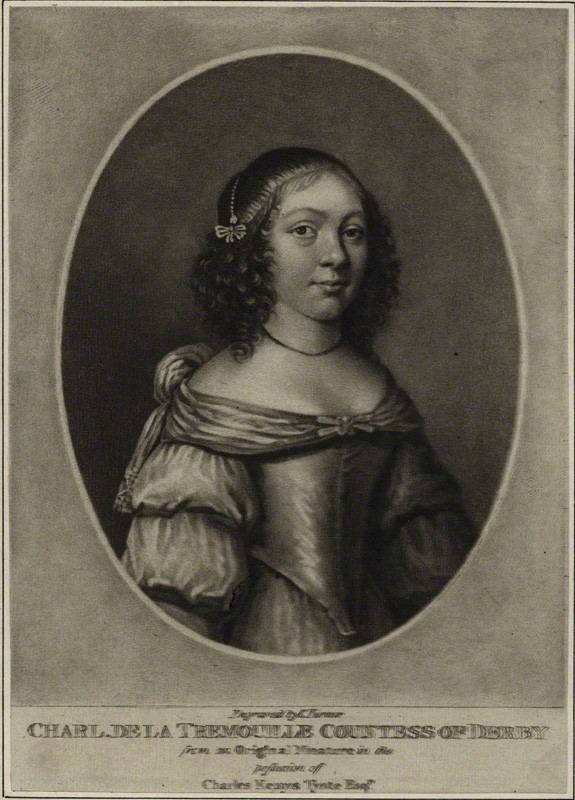Name Charlotte Countess | Role Countess of Derby | |
 | ||
Children Charles Stanley, 8th Earl of Derby Parents Claude de La Tremoille, Countess Charlotte Brabantina of Nassau Grandchildren William Stanley, 9th Earl of Derby, James Stanley, 10th Earl of Derby Similar People James Stanley - 7th Earl o, William Stanley - 6th Earl o, William the Silent, Charlotte of Bourbon, Thomas Fairfax | ||
The Importance of Charlotte Stanley, Countess of Derby
Charlotte Stanley, Countess of Derby (December 1599– March 31st, 1664), born Charlotte de La Trémoille, is famous for her robust defence of Lathom House during the English Civil War.
Contents
- The Importance of Charlotte Stanley Countess of Derby
- Early life
- English Civil War
- Isle of Man
- Family
- References
Early life
Charlotte, born at the chateau of Thouars, Poitou, in France, was the daughter of the French nobleman Claude de La Trémoille, 2nd Duke of Thouars, and his wife Countess Charlotte Brabantina of Nassau. Her maternal grandparents were William I, Prince of Orange and Charlotte de Bourbon.
On 26 June 1626, Charlotte married the English nobleman James Stanley, 7th Earl of Derby, who was taken prisoner at Nantwich in 1651, and was beheaded at Bolton.
English Civil War
Lady Derby was famous for her defence of Lathom House in the Siege of Lathom House by Parliamentary forces during the First English Civil War in 1644. During the absence of her spouse, she was left in charge of what turned out to be the last remaining Royalist stronghold in Lancashire. Immediately after the fall of Warrington, she was requested to acknowledge Parliament's authority and surrender her house, but she refused on the grounds that doing so would dishonour her husband. She offered to limit herself to defending her home, and this postponed further attacks on her position. In February 1644, Latham House was besieged by the forces of Sir Thomas Fairfax. Lady Derby had fortified the castle to resist bombardment and assembled a militia of seasoned marksmen who were able to inflict significant losses by sniping, and she expressly refused repeated offers of surrender. On 27 May 1644, Prince Rupert arrived with royalist forces and the siege was broken. Lady Derby and her staff were evacuated to the Isle of Man.
Isle of Man
Her husband was also Lord of Mann, and Lady Derby's attempt to barter the Isle of Man for her husband's freedom provoked an anti-English revolt on the island led by Illiam Dhone.
Lady Derby was holding Man, but the total destruction of the Royal army at Worcester, the flight of Prince Charles to an exile in France, and the execution of her husband, left her without hope of assistance, she eventually yielded with reluctance to the necessity of a surrender, and retained, says David Hume, "the glory of being the last person in the three kingdoms, and in all their dependent dominions, who submitted to the victorious rebels".
Family
Charlotte and Derby were parents of four daughters and five sons. Only four of their children appear to have survived to a marriageable age:
Charles's two sons, William, the 9th Earl (c. 1655–1702), and James, the 10th (1664–1736), both died without sons, and consequently, when James died in February 1736, his titles and estates passed to Sir Edward Stanley (1689–1776), a descendant of the 1st Earl. From him the later Earls of Derby are descended.
